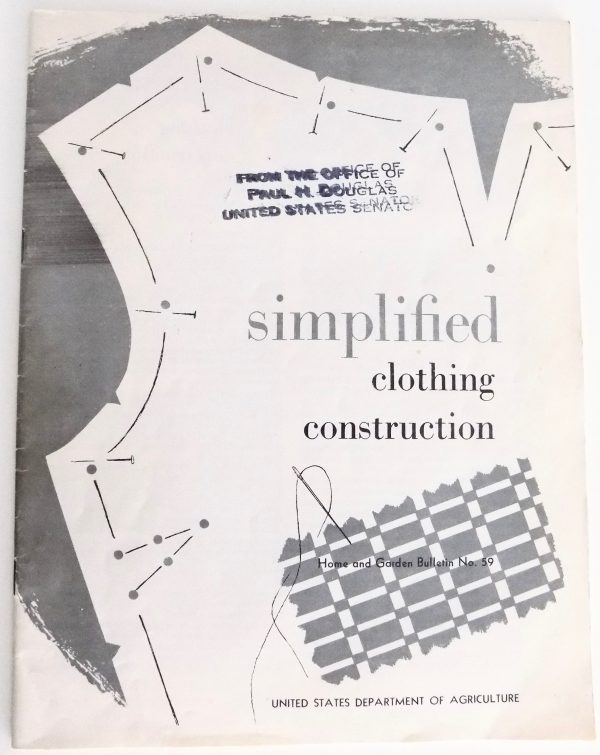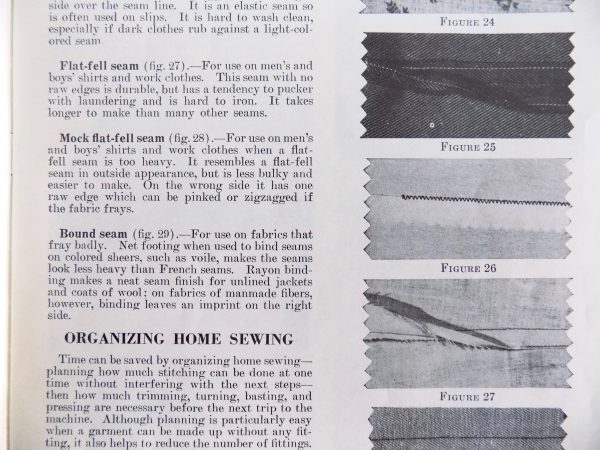It is easy to see things like “Simplified Clothing Construction” published by the United States Department of Agriculture and think it is quaint or out of touch. “Ah, but Tchad! I want fashion and luxury, not frowsy old home ec handouts!” To which we’d respond: “Don’t be a snob.”
If you can get your hands on this little gem – either as a vintage curiosity or a sewing instructional manual – do it.
There was a time when the Department of Agriculture published booklets and pamphlets like this in order to help facilitate an informed, talented citizenry. You could write to the office itself and get a copy, or you could go to your local county extension agent and get one. They were thorough and cheap – perfect for a people pulling their way out of an economic depression and even better for helping develop a citizenry that had functional skills built into the culture.
One of the big differences between books and pamphlets about sewing from this era and current books, aside from any technological innovation in the sewing world, is the really direct tightness of the prose. These folks were not playing around with this. This bulletin is only 32 pages long and goes through so much more than the average “It’s Sew Easy!” books you find in the flotsam and jetsam on your local fabric and craft store’s shelves.
Ms. Margaret Smith helps you work out the universal sewing sequences for dresses and shirts (anything with a torso and sleeves, really) while giving you tons of options for basting and seams. She covers it all in a way that packs in information without overwhelming.
And this is going to be the big difference between these older mid-century manuals and the manuals of today. There is less time spent introducing things and more spent just telling you the what and how. It is a nice distinction to make.
So check out any of these and work your way through what they have to offer – it is a different world and approach to sewing that you may find more appealing than the cute branded sewing world we have now.
We’ve had our copy in the Workroom library for decades, but you can find it on Ebay, Etsy, and other sellers very easily.
Feel free to let us know if you’d like to come up and photocopy ours if you are in Chicago. If you are interested in vintage and antique sewing texts and bulletins like this, you can also check out any of the publications that were coming out of large American universities. Purdue University and the University of Iowa had amazingly comprehensive home economics programs that published a lot.









